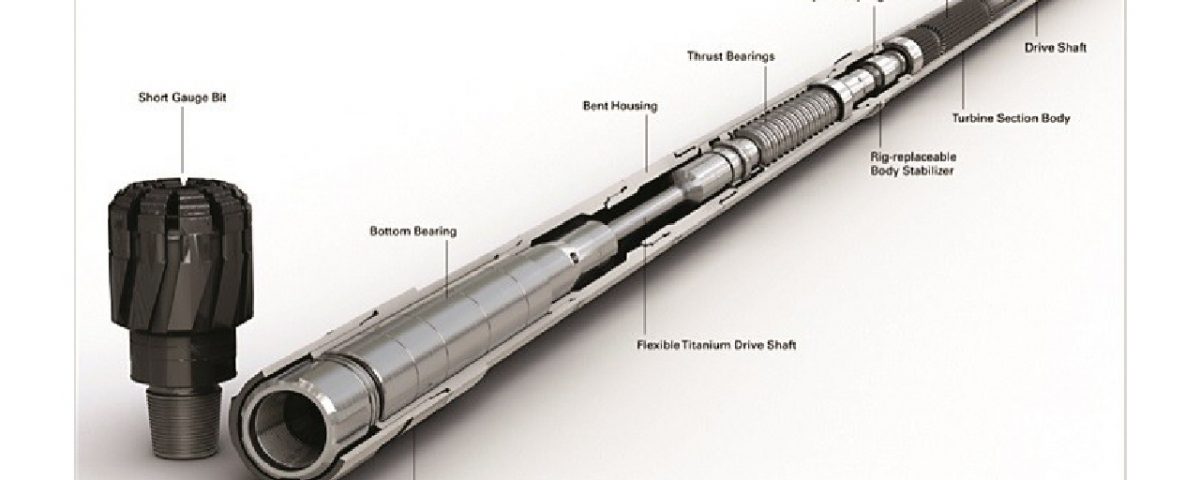Nowadays, many wells required complex well trajectory plans in order to reach reservoir sections and some of complicated well paths (Figure 1) cannot be drilled with either rotary drilling assemblies or mud motors. In order to achieve the drilling goal, rotary steerable tools are usually selected.
While the precise mechanics might vary, each rotary steerable tool uses much the same approach. Running the rotary steerable immediately above the bit serves as a sort of replacement for a near bit stab (NB stab). Most tools use three blades close to the drill bit, which act as stablizers and move in and out. While the tool turns, the blade which is turning in the opposite direction pushes against the side of the hole, giving the necessary side force to create a curved hole while drilling.
When using a steerable motor, the adjustment of the well path a series of slide drilling and rotary drilling doesn’t give a clean smooth edge, but rather creates a hole with multiple sharp edges, and straight sections between them. A rotary steerable tool, on the other hand, does give a smooth curved hole. This makes the wellbore more stable, and less resistant when tripping in and out of the hole. With higher inclinations, a smooth curve makes for an easier job of running casing or logging tools.
With long horizontal hole sections, it becomes increasingly difficult to slide at the same time as drilling. This is because the rotation of the string releases the friction between the pipe and thehole. For this reason, rotary steerables are used so that long horizontal holes may be drilled without the need for a sliding motor assembly.
In the past, many horizontal holes were lost because of insufficient hole cleaning. Cuttings will inevitably build up in the hole alongside the sliding drill pipe, and when the pipe is rotated, they can easily be blown into the moving fluid stream.
On top of allowing the tool to be controlled from the surface, it may also be linked to a “logging while drilling” tool. This tool will survey the radioactivity or electrical properties of rock as it is drilled through. The bit may then be steered in relation to the properties of the rock itself.
A downside of rotary steerable tools is their cost. The tools themselves may cost in excess of $15,000 per day, and when the price of LWD tools is taken into consideration, this cost can reach over $25,000. These tools are therefore only used when the advantages they provide outset the cost compared to using other tools. They are commonly found on high-cost rigs, or when the well path is complicated, demands a long horizontal hole, or requires geosteering.
Rotary Steerable Tools By Each Major Service Company
The following videos show some of rotary steerable tool by major service companies.
Power Drive RSS by Schlumberger
The Revolution Rotary-Steerable System By Weatherford
AutoTrak Curve Rotary Steerable System By Baker Hughes
Geo-Pilot® Rotary Steerable System By Halliburton
References
Inglis, T.A. (2010) Directional drilling. Dordrecht: Springer-Verlag New York.
Mitchell, R.F., Miska, S.Z. and Aadnoy, B.S. (2012) Fundamentals of drilling engineering. Richardson, TX: Society of Petroleum Engineers.
Short, J.J.A. (1993) Introduction to directional and horizontal drilling. Tulsa, OK: PennWell Books.
Technical, T., Astier, B., Baron, G., Boe, J.-C., Peuvedic, J.L.P. and French Oil & Gas Industry Association (1990) Directional drilling and deviation control technology. Paris: Editions


